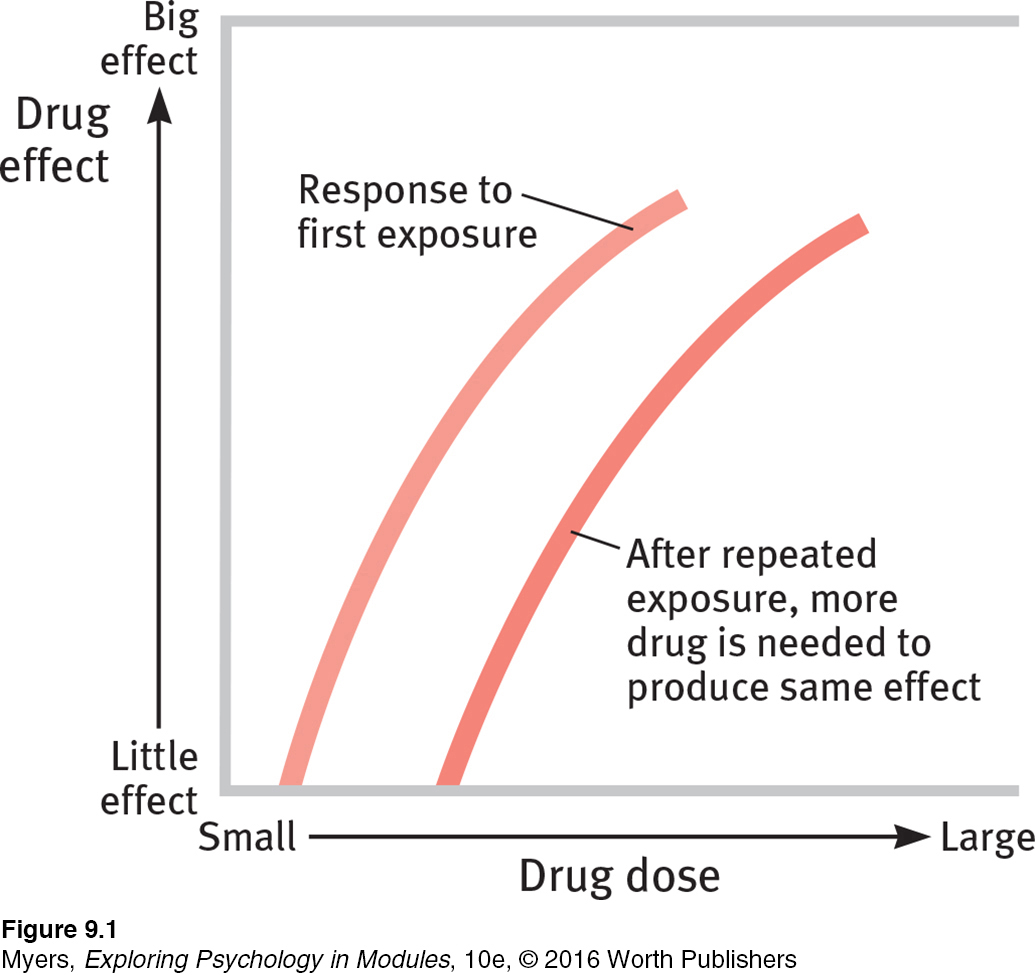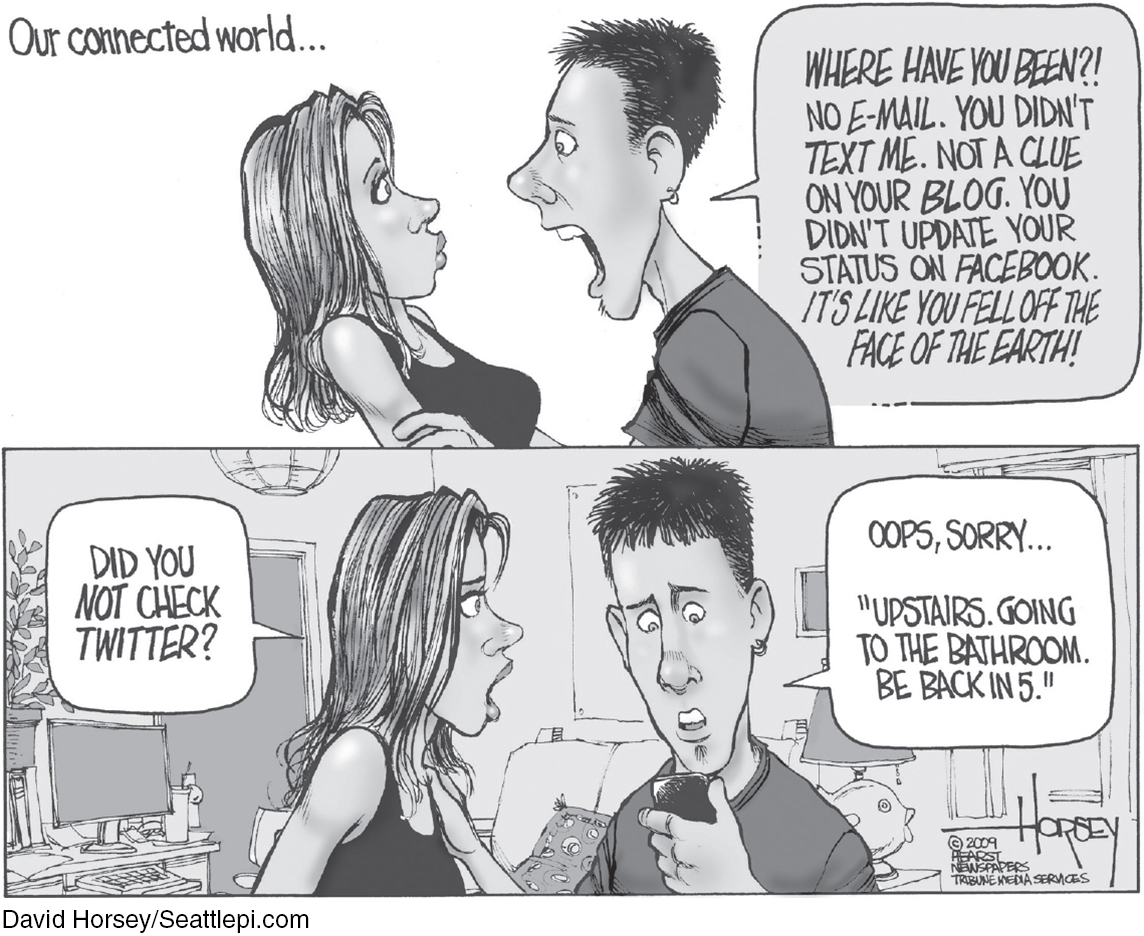9.1 Tolerance and Addiction
9-
psychoactive drug a chemical substance that alters perceptions and moods.
substance use disorder continued substance craving and use despite signifi cant life disruption and/or physical risk.
Chemical substances that change our perceptions and moods are termed psychoactive drugs, and most of us manage to use such substances, which include caffeine and alcohol, in moderation and without disrupting our lives. But some of us develop a self-
When Is Drug Use a Disorder? According to the American Psychiatric Association, a person may be diagnosed with substance use disorder when drug use continues despite significant life disruption. Resulting brain changes may persist after quitting use of the substance (thus leading to strong cravings when exposed to people and situations that trigger memories of drug use). The severity of substance use disorder varies from mild (two to three of these indicators) to moderate (four to five indicators) to severe (six or more indicators).
Diminished Control
|
Diminished Social Functioning
|
Hazardous Use
|
Drug Action
|
| (Source: American Psychiatric Association, 2013.) |
tolerance the diminishing effect with regular use of the same dose of a drug, requiring the user to take larger and larger doses before experiencing the drug’s effect.
addiction compulsive craving of drugs or certain behaviors (such as gambling) despite known adverse consequences.
withdrawal the discomfort and distress that follow discontinuing an addictive drug or behavior.
105

Why might a person who rarely drinks alcohol get buzzed on one can of beer while a long-
THINKING CRITICALLY ABOUT
Addiction
9-
In recent years, the concept of addiction has been extended to cover many behaviors formerly considered bad habits or even sins. Psychologists debate whether the concept has been stretched too far, and whether addictions are really as irresistible as commonly believed. For example, “even for a very addictive drug like cocaine, only 15 to 16 percent of people become addicted within 10 years of first use,” observed Terry Robinson and Kent Berridge (2003).

Addictions can be powerful, and many addicts do benefit from therapy or group support. Alcoholics Anonymous has supported millions in overcoming their alcohol addiction. But viewing addiction as an uncontrollable disease can undermine people’s self-
The addiction-
Sometimes, though, behaviors such as gambling, video gaming, or online surfing do become compulsive and dysfunctional, much like abusive drug-
106